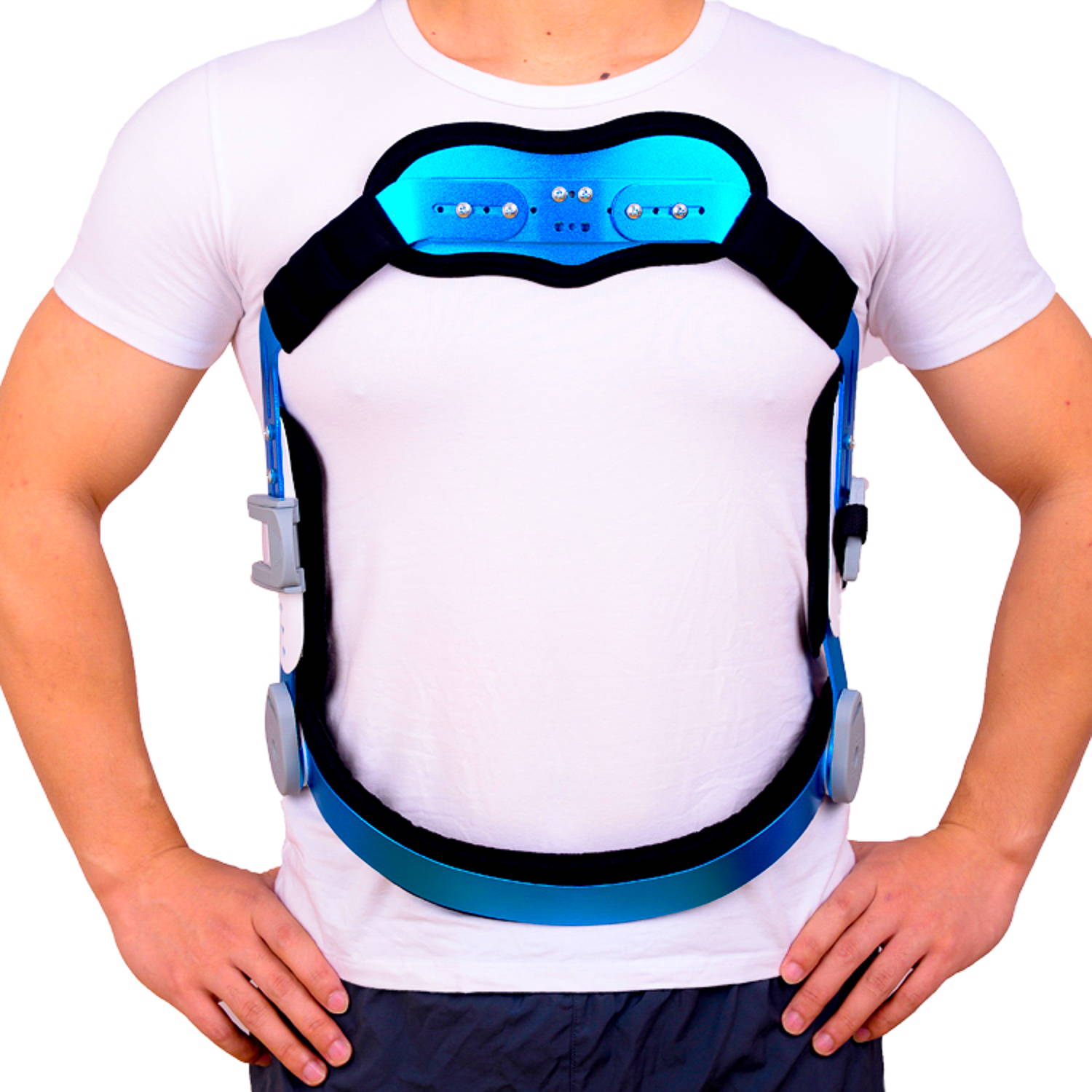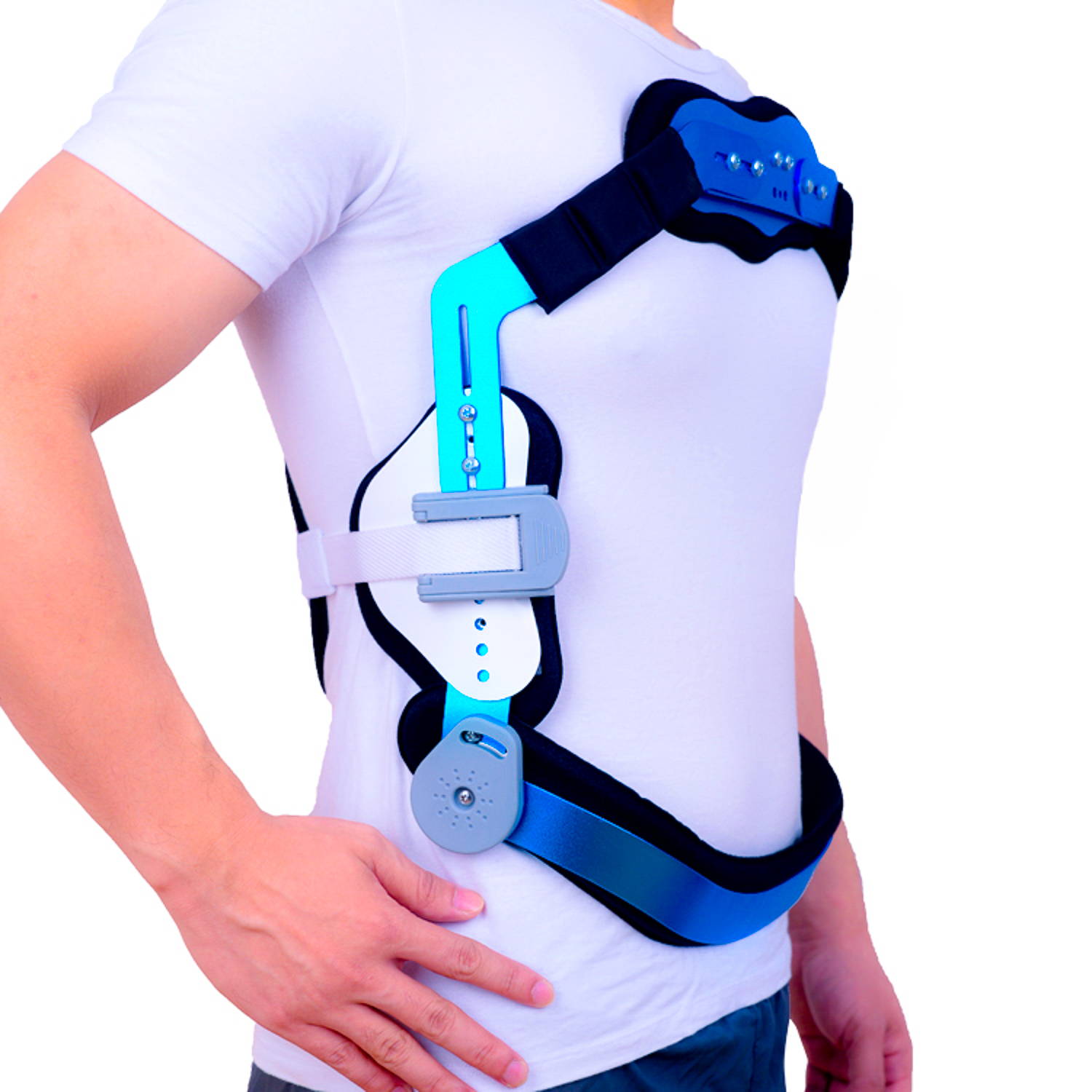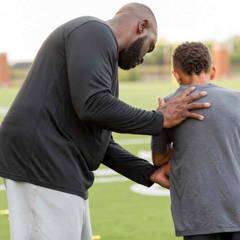These are instruction to wear brace while in bed and lying down.
Step 1
While lying on your back fit the brace across the chest/abdomen area. The lock on the left side is to remain unlocked at this stage.
The left hand side of the brace is unlocked.
Step 2
Roll onto your side using the log roll method taught to you while in hospital. Ensure that the spine support pad is placed over the area where your injury is located.
The spine pad is placed where your injury is located.
Step 3
Roll onto your back.
Place the keyhole clip over the metal screw.
The key hole clip is placed over the metal screw.
Step 4
On the left side close the lock to tighten the brace.
Be careful not to pinch your skin when closing the lock.
Make sure your brace fits firmly.











